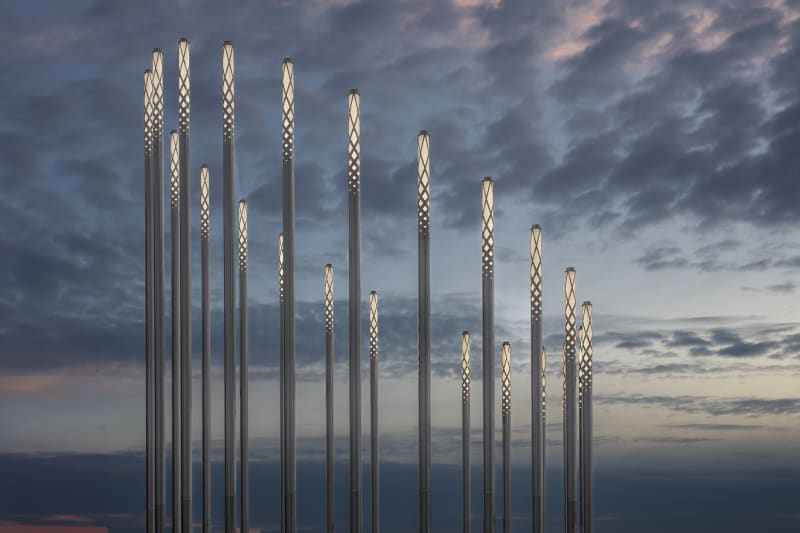Olafur Eliasson: Long daylight pavilion: HAM Helsinki
Long daylight pavilion is a site-specific artwork that marks the sun’s path through the sky above the city of Helsinki on the summer solstice. Curated by HAM Helsinki Art Museum, the light installation is inspired by time, the sun, and the geographical location of Helsinki.
The artwork Long daylight pavilion consists of twenty-four poles, embedded directly into the bedrock. The poles form an open, spacious ring that extends from the land into the water. The height of the poles were determined by tracking the path of the sun as it appears from the site on 21 June, the longest day of sunlight during the year. The shortest pole, which indicates the lowest point of the sun on the solstice, is situated at the north side of the circle, and the tallest – reflecting the location of the sun at its zenith – is in the south. Viewers can use the work as a kind of compass to orient themselves to their surroundings and in relation to the Earth.
The light installation will reveal its full brilliance in the dark, when lanterns shine out of the poles through diamond-shaped apertures that become increasingly open towards the tops. Here, they culminate in single points of bright light. Together, these points of light produce an angled ring that matches the sun’s path. For residents of Kruunuvuorenranta, the artwork appears as a softly glowing beacon within an attractive waterfront park. As the bright lights at the top of the poles are oriented towards Central Helsinki, to the west, the artwork appears in the city like a lighthouse shining across the dark water. People approaching from the bridge glimpse the lights foreshortened into changing ellipses, whereas from particular angles, they may appear as a single luminescent ring hovering in the distance.

